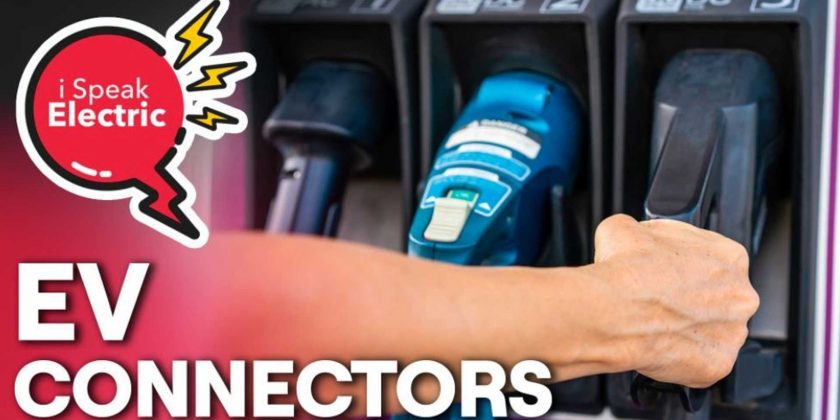Which connector is right for your EV?
Hello and welcome back to another instalment of the I Speak Electric series. As you know, we take a topic in the world of EVs and make a short video explaining the ins and outs. Today we’re looking at EV connectors. Now, most of us who own an EV will fully understand the connectors that our own car uses, but maybe not others in use.
Type 1 – SAE J1772
Let’s kick things off with the humble Type 1, or SAE J1772, socket that our US viewers will know so well. This type of connector is circular, with 5 separate pins for delivering the AC current, signaling and earthing.
Although still used in Europe by some older EVs such as the Nissan LEAF and the Mitsubishi Outlander PHEV, it is mostly used in the US where it is the standard. Type 1, as with many chargers can deliver varying amounts of power depending on the vehicle and power supply to the charger. The Chevrolet Bolt, hugely popular in the US, can charge its 66kWh battery at a rate of 7.2kW off a Type 1. In Europe, the Nissan LEAF, depending on how the car is spec’d, it can take either 3.6kW or 6.6kW.
Type 2 – Mennekes
Next up we’re heading to Europe where the Type 2, or Mennekes, connector reigns supreme. Now, if you want more information on this type of charger, we’ve made a whole video about it, so go check that out.
CHAdeMo
It’s time to let go of slower AC charging and move on to faster DC charging now. And we’ll begin with the Chademo connector.
Once again, if you want some more detailed information on this, then check out the full video we made a few months back all about it.
CCS
Time to move on to the much more numerous connector, the CCS connector. CCS stands for Combined Charging System. So, in essence, what the CCS connector does is turn the slower AC charging connector into a faster DC one by adding 2 DC pins.
Tesla
And for the Tesla fans out there, we’re moving on to you now. Don’t worry! But then again, if you’re a Tesla fan, then you’re probably going to know about most of what I say here! Tesla gets their own section of this video due to the fact they have their own proprietary network with their own connector.
Guobiao
Let’s move on again. We consider ourselves an international show here, and we’re not making any exceptions for charging connectors. In China, a different standard has emerged, and it’s called Guobiao.
Wireless, Inductive
And finally, we’re going to cheat a bit in this section, because I suppose technically there’s no connection…I don’t know, you decide and let us know in the comments!
We’re going to mention inductive or wireless charging.
Be sure to watch the video for more information and check out this video channel here.
Source: Read Full Article
